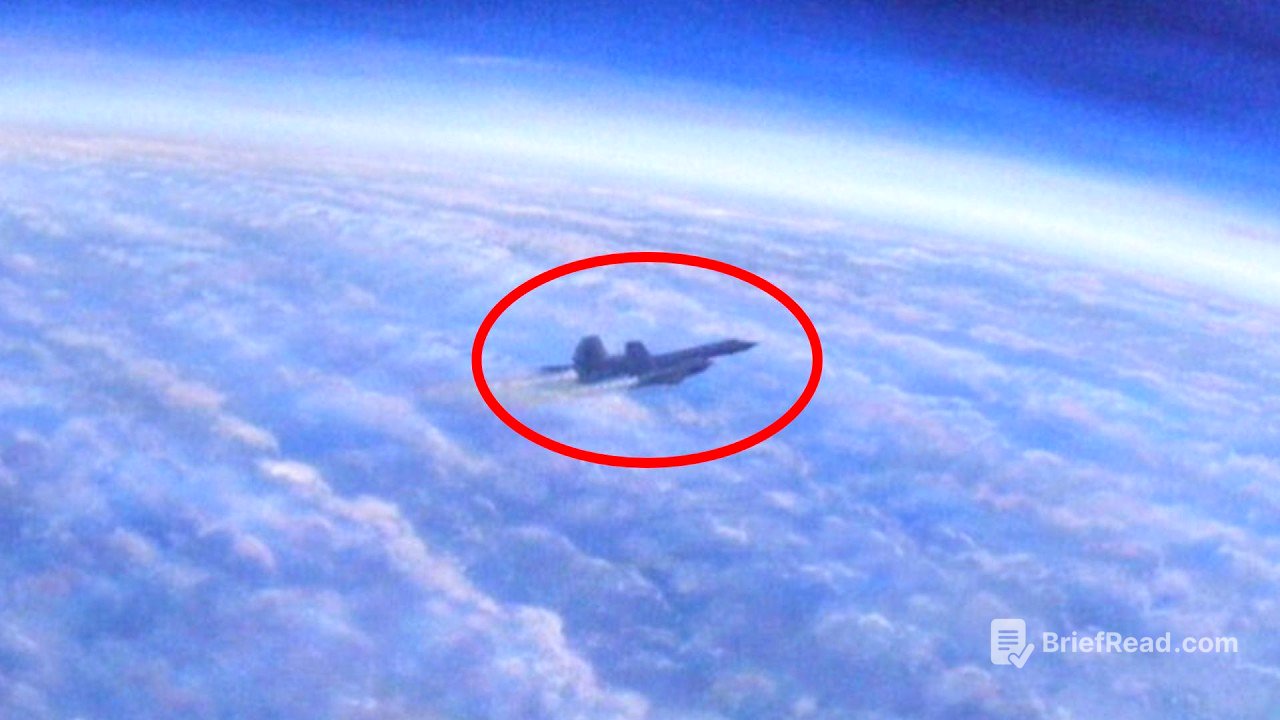TLDR;
This video chronicles the development, operation, and eventual retirement of the SR-71 Blackbird, a high-speed, high-altitude reconnaissance aircraft. It details the historical context of its creation following the U-2 incident, the innovative engineering required to overcome challenges like extreme heat and radar detection, and its crucial role in gathering intelligence during the Cold War. The Blackbird's unmatched speed and altitude allowed it to evade enemy defenses and capture invaluable data, making it a symbol of American technological prowess.
- The SR-71 was developed in response to the U-2 spy plane incident, which highlighted the need for an aircraft that could outfly and evade Soviet air defenses.
- Key innovations included the use of titanium alloy to withstand extreme heat, a unique stealth design to minimize radar detection, and specialized JP-7 fuel for high-speed flight.
- The SR-71 set numerous speed and altitude records and played a critical role in gathering intelligence during the Cold War, with over 4,000 missiles fired at it without a single hit.
The Challenge [0:48]
The development of the SR-71 Blackbird was spurred by the downing of a U-2 spy plane piloted by Francis Gary Powers over Soviet airspace in 1960. This incident exposed the vulnerability of existing reconnaissance aircraft and strained Cold War relations. The U.S. needed a new aircraft that could fly higher and faster than any existing air defense system could reach, with a minimal radar profile to avoid detection. Lockheed's Skunk Works, led by Clarence "Kelly" Johnson, took on the challenge of creating this virtually undetectable and untouchable aircraft.
Inventing the Future [3:15]
The A-12 prototype, the SR-71's predecessor, was a radical departure from conventional aircraft design. Its sleek, dart-like shape and inward-canted vertical stabilizers were designed to deflect radar energy. The aircraft featured tapered chines along the fuselage to improve stability, provide lift, and scatter radar signals. The extreme speeds required the use of titanium alloy for 85% of the structure to withstand temperatures exceeding 1,000°F. The A-12 skin panels were manufactured to fit loosely on the ground to accommodate temperature variations during flight, leading to fuel leaks while stationary. The canopy used special quartz glass to withstand extreme temperatures, and the aircraft was powered by revolutionary Pratt & Whitney J58 engines that functioned as both traditional jet engines and ramjets.
To the Test [8:06]
The A-12 prototype underwent secret testing at Groom Lake, Nevada, also known as Area 51. On April 30th, 1962, piloted by Lou Schalk, the A-12 took its first flight, reaching 340 mph and 30,000 ft. Over the following months, testing progressed, and on July 20th, 1963, the A-12 achieved a sustained speed above Mach 3 at 78,000 ft. Radar deflection capabilities were confirmed, showing a 90% reduction compared to conventional aircraft. Traditional navigation methods became obsolete at these speeds, requiring pilots to rely on mountain ranges, coastlines, and large bodies of water for visual references.
From A-12 to SR-71 [11:05]
While the CIA operated the A-12, the U.S. Air Force developed its own version, the SR-71, which was longer and heavier to accommodate more fuel and a two-person crew. The SR-71 featured tandem cockpits for a pilot and a Reconnaissance Systems Officer (RSO) to manage surveillance systems. In 1964, President Lyndon B. Johnson publicly revealed the existence of the aircraft, referring to it as the RS-71, but it was later changed to SR-71. The aircraft received its distinctive black paint for efficient heat absorption and emission, leading to the name "Blackbird."
Blackbird Takes Flight [13:37]
The first SR-71 flew on December 22nd, 1964, and entered service in January 1966. On March 21st, 1968, the first operational SR-71 mission flew from Kadena Air Base in Okinawa, gathering intelligence over North Vietnam. The SR-71 took over the reconnaissance role in Southeast Asia as the A-12 program ended. The SR-71 could survey 100,000 square miles per hour at over 80,000 ft, with camera systems resolving objects as small as 6 inches. Its primary defense was acceleration, outrunning any detected surface-to-air missiles. Over 4,000 missiles were fired at SR-71s, but none scored a hit.
Flying the Blackbird [16:09]
Flying the SR-71 required specialized pressure suits similar to those used by astronauts. At operating altitudes, blood would boil without pressurization, and ejection at Mach 3 would expose pilots to extreme temperatures. Missions lasted 3-4 hours, with some stretching to eight or more. During the Yom Kippur War in 1973, the SR-71 provided crucial intelligence to President Nixon, proving that both the Arabs and Israelis were lying about troop movements. Blackbird crews could spot Soviet interceptors trailing far below them during operations in Northern Europe.
Becoming Legend [20:15]
The SR-71's capabilities were recognized on September 1st, 1974, when it set a speed record from New York to London in 1 hour 54 minutes 56.4 seconds. On July 28th, 1976, it set an altitude record of 85,069 ft and a speed record of 2,193.2 mph. On April 15th, 1986, during a reconnaissance mission over Libya, Major Brian Shaw outran multiple surface-to-air missiles by pushing the Blackbird beyond its official maximum speed. In 1987, a damaged SR-71 was escorted to safety by Swedish fighters after a serious engine explosion during a Baltic Express mission, preventing Soviet MiG-25s from shooting it down.
Last Flight [24:11]
The SR-71 program faced increasing scrutiny due to its high operating costs and maintenance demands. In 1989, the Air Force retired the SR-71 fleet. On March 6th, 1990, the SR-71 made its final operational flight, flying from Los Angeles to Washington D.C. in 67 minutes 54 seconds, setting four new speed records. Congress voted to reactivate three SR-71s in 1994, and they returned to limited service in 1995 until final retirement in 1998. NASA operated two airframes until 1999 for high-speed research. On October 9th, 1999, the SR-71 made its final flight at an air show at Edwards Air Force Base, reaching Mach 3.21 and an altitude of 80,100 ft.









